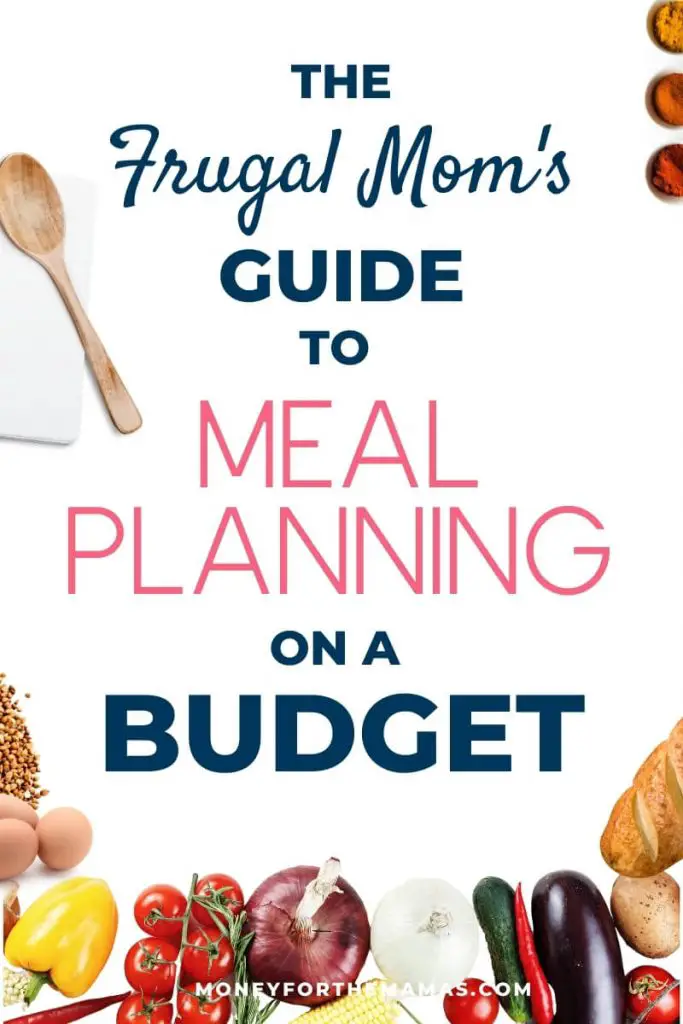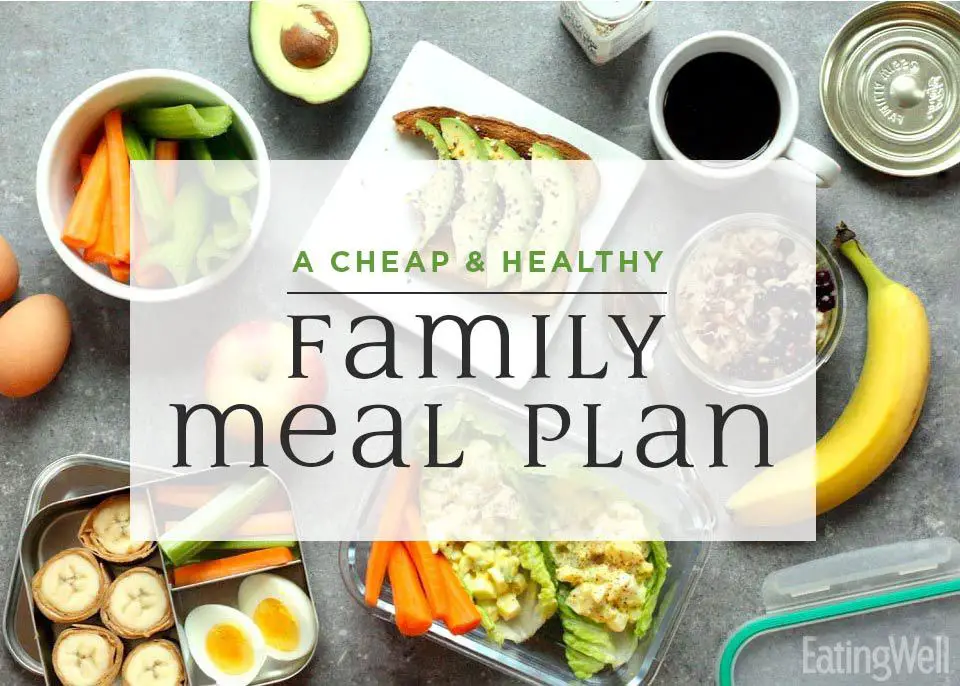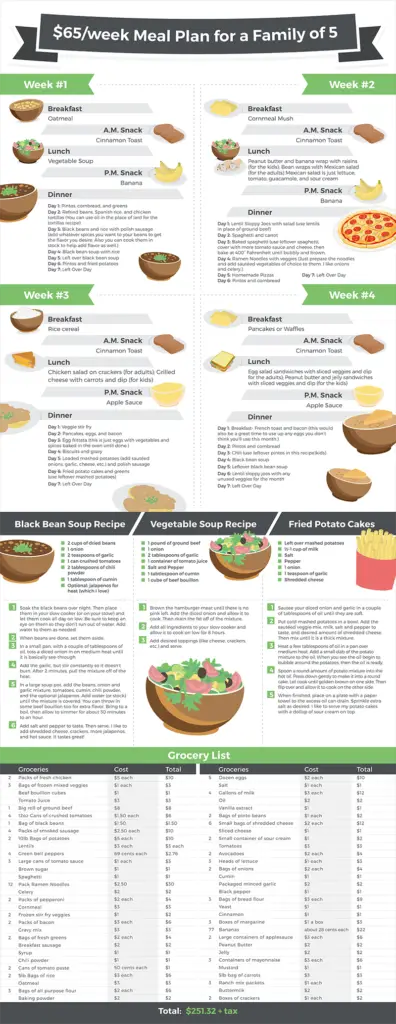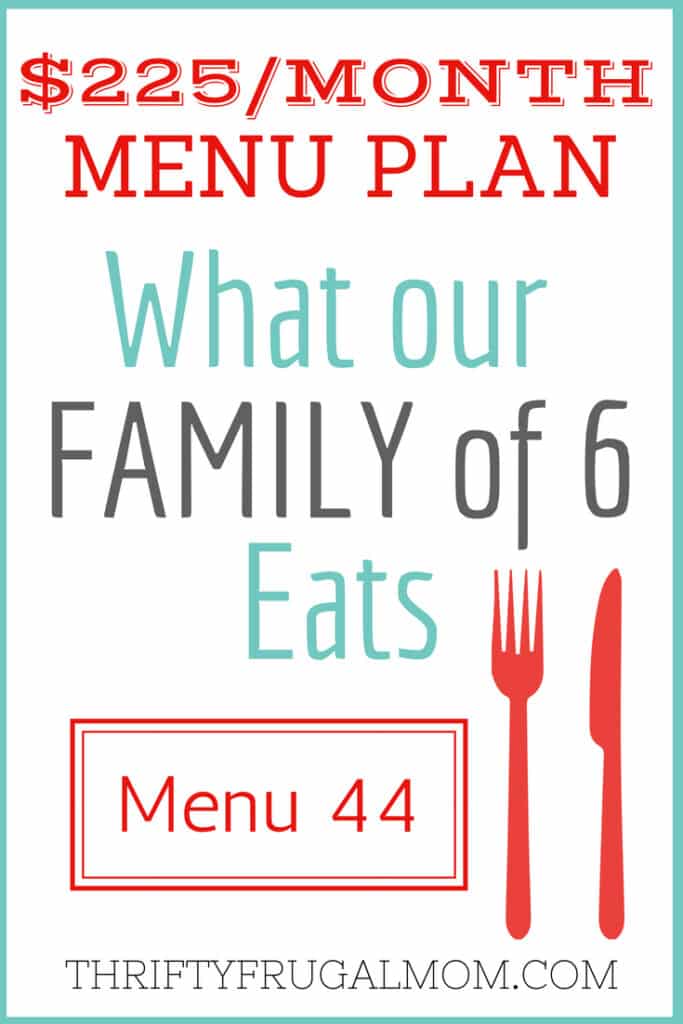Are you tired of spending too much money on groceries every week? Look no further, because in this article, we will show you how to become a master at frugal family meal planning. By following our tips and tricks, you can save money and still enjoy delicious and nutritious meals. With a little bit of planning and creativity, you’ll be able to cut down on your grocery bill without sacrificing taste or quality. So let’s get started on this budget-friendly culinary adventure!
Benefits of Meal Planning
Meal planning is a great way to not only save money, but also save time and reduce food waste. By taking the time to plan your meals in advance, you can make more informed choices about what to buy and what to cook, ensuring that you stick to your budget and avoid unnecessary expenses. Additionally, meal planning allows you to maximize the use of ingredients, reducing the chances of them going to waste. Overall, meal planning is a win-win situation, helping you save money while also promoting a more sustainable lifestyle.
Save Money
One of the biggest benefits of meal planning is the potential to save money. When you plan your meals in advance, you have a clear idea of what ingredients you need and how much they will cost. This allows you to make better choices when it comes to purchasing groceries, avoiding last-minute impulse buys that can quickly add up. Additionally, by planning your meals around sales and utilizing budget-friendly ingredients, you can take advantage of cost-saving opportunities and stretch your dollar further.
Save Time
In today’s busy world, time is a precious commodity. Meal planning can help you save time by eliminating the need to think about what to cook each day. Instead of spending hours each week trying to come up with meal ideas and making multiple trips to the grocery store, you can streamline your cooking process by planning ahead. With a well-thought-out meal plan, you can minimize the time spent on meal preparation and free up more time for other activities or to simply relax and unwind.
Reduce Food Waste
Food waste is a major issue in many households, leading to both economic and environmental consequences. When you don’t have a plan for your meals, it’s easy to buy more ingredients than you actually need, resulting in excess food that often goes to waste. Meal planning helps to address this issue by allowing you to be more intentional with your grocery shopping. By taking inventory of your pantry and planning your meals accordingly, you can use up ingredients before they spoil and minimize food waste in your household.
Getting Started with Meal Planning
Getting started with meal planning may seem overwhelming at first, but with a few simple steps, you can easily incorporate this practice into your routine. Here are some tips to help you get started:
Inventory Your Pantry
Before you start meal planning, take the time to do an inventory of your pantry. This will help you identify what ingredients you already have and what you need to purchase. By utilizing what you already have, you can save money by minimizing your grocery list.
Plan Your Meals Around Sales
To save even more money, plan your meals around sales and discounts. Check your local grocery store flyers and websites for any current deals or promotions. By incorporating these sale items into your meal plan, you can take advantage of discounted prices and maximize your savings.
Set a Budget
Setting a budget is an essential step in meal planning. Determine how much you are willing to spend on groceries each week or month and stick to it. This will help you make more mindful choices when it comes to purchasing ingredients and avoid overspending.

Planning Healthy and Affordable Meals
Meal planning isn’t just about saving money; it’s also an opportunity to plan nutritious and balanced meals for you and your family. Here are some tips for planning healthy and affordable meals:
Include Protein-Rich Foods
Protein is an essential nutrient that plays a vital role in building and repairing tissues, as well as supporting overall health. When planning your meals, be sure to include protein-rich foods such as lean meats, poultry, fish, eggs, tofu, and legumes. Not only are these options nutritious, but they are also relatively affordable compared to other sources of protein.
Incorporate Vegetables and Fruits
Vegetables and fruits are packed with essential vitamins, minerals, and fiber. They are also often more budget-friendly compared to other food groups. Aim to incorporate a variety of colorful fruits and vegetables into your meal plan. Buying seasonal produce or utilizing frozen options can also help reduce costs.
Choose Whole Grains
Whole grains, such as brown rice, whole wheat pasta, and quinoa, are a great source of fiber and other essential nutrients. They are also often more affordable than refined grains. Swap out refined grains for whole grains in your meal plan to promote better health and save money.
Utilize Budget-Friendly Ingredients
When planning your meals, look for budget-friendly ingredients that offer good value for money. This can include items such as beans, lentils, canned tuna, frozen vegetables, and inexpensive cuts of meat. By incorporating these ingredients into your meals, you can still create delicious and nutritious dishes while staying within your budget.
Batch Cooking and Freezing
Batch cooking and freezing are handy techniques that can simplify your meal planning process and help you make the most of your ingredients. Here’s how you can make batch cooking and freezing work for you:
Cook in Bulk
When preparing meals, consider cooking in larger quantities. This allows you to make multiple meals at once, saving you time and effort in the long run. For example, you can cook a large pot of soup or a casserole and divide it into individual portions to be enjoyed throughout the week.
Store Properly
Proper storage is key to maintaining the quality and freshness of your batch-cooked meals. Invest in good-quality airtight containers or freezer bags that will keep your food safe from freezer burn. Label each container with the contents and date to ensure you know what’s inside and when it was prepared.
Utilize Freezer-Friendly Foods
Not all foods freeze well, so it’s important to choose ingredients that are freezer-friendly. Some examples of freezer-friendly foods include cooked rice, pasta sauces, cooked chicken or beef, and soups. By using freezer-friendly ingredients, you can easily stock your freezer with ready-to-eat or ready-to-cook meals for those busy days when cooking from scratch is not an option.

Using Leftovers Creatively
Leftovers are a valuable resource in your meal planning arsenal. Instead of letting them go to waste, you can transform them into new meals and repurpose ingredients. Here are some creative ways to make the most of your leftovers:
Transforming Leftovers into New Meals
With a little creativity, you can transform your leftovers into entirely new and delicious meals. For example, leftover roasted chicken can be used in tacos, sandwiches, or salads. Leftover vegetables can be blended into a soup or used as a pizza topping. The possibilities are endless!
Repurposing Ingredients
If you have leftover ingredients that didn’t make it into a meal, think of ways to repurpose them into a new dish. For example, if you have leftover cooked rice, you can turn it into a stir-fry or a fried rice dish. If you have leftover roasted vegetables, you can use them as a filling for a quesadilla or mix them into a frittata. Get creative and have fun experimenting with different combinations.
Smart Shopping Techniques
A key aspect of meal planning is smart shopping. By adopting certain techniques when grocery shopping, you can save money and make your meal planning process more efficient. Here are some tips to help you become a smarter shopper:
Create a List and Stick to It
Before heading to the grocery store, create a list of the items you need and stick to it. This will help you avoid impulse buys and stay focused on your meal plan. By following your list, you can also save time by minimizing aimless wandering through the aisles.
Shop Seasonally
Shopping for seasonal produce is not only cost-effective but also ensures that you are getting the freshest and most flavorful ingredients. Seasonal produce is often abundant and therefore tends to be priced more competitively. Local farmers’ markets are a great place to find seasonal produce at reasonable prices.
Compare Prices
Don’t be afraid to compare prices between different grocery stores and brands. Sometimes, the same product can have a significant price difference depending on where you shop. Use apps or websites that allow you to compare prices and find the best deals in your area. Saving a few cents here and there can add up to substantial savings over time.
Utilize Coupons and Rewards Programs
Take advantage of coupons and rewards programs offered by your local grocery stores. Keep an eye out for coupons in newspapers, online, or in store flyers. Sign up for loyalty programs and take advantage of any discounts they offer. Every cent counts when it comes to saving money on groceries.

Tips for Saving Money on Staples
Staple foods are a necessity in every household, but they can also take a significant chunk out of your budget. Here are some tips for saving money on staples:
Buy in Bulk
Buying staple items in bulk can save you money in the long run. Items such as rice, pasta, beans, and flour have a long shelf life, making it cost-effective to buy them in larger quantities. Look for bulk sections in your grocery store or consider joining a wholesale club for discounts on bulk purchases.
Shop Generic Brands
Generic or store brands often offer the same quality as name brands but at a lower price. Don’t be afraid to give them a try and see if they meet your expectations. You may be pleasantly surprised by the savings without compromising on quality.
Make Homemade Versions
Rather than purchasing processed or pre-packaged foods, consider making homemade versions of your staple items. For example, instead of buying pre-made sauces or salad dressings, try making them from scratch using simple ingredients. This allows you to customize flavors to your liking and save money in the process.
Involving the Whole Family
Meal planning can be a fun and collaborative activity that involves the whole family. By getting everyone on board, you can not only share the workload but also teach valuable skills and lessons. Here are some ways to involve the whole family in meal planning:
Delegate Meal Preparation Tasks
Assigning different meal preparation tasks to family members can help lighten the workload and make meal planning more enjoyable. Involving children in age-appropriate tasks, such as washing and chopping vegetables or setting the table, not only teaches them important life skills but also instills a sense of responsibility and ownership.
Have a Weekly Family Cook-off
Turn meal planning into a friendly competition by having a weekly family cook-off. Each member of the family can take turns planning and preparing a meal of their choice. This not only encourages creativity and variety in meals but also brings the family together and allows everyone to showcase their cooking skills.
Teach Kids About Budgeting and Nutrition
Meal planning is an excellent opportunity to teach children about the importance of budgeting and making healthy food choices. Involve them in the process of planning meals and discuss why certain ingredients are chosen and how they contribute to a balanced diet. By involving children in meal planning and grocery shopping, you can help them develop a greater appreciation for food and its value.

Creative Ways to Save on Dining Out
While meal planning is primarily aimed at saving money on homemade meals, there may still be occasions where dining out is inevitable. However, there are ways to be frugal even when dining out. Here are some creative ways to save on dining out:
Pack Your Own Snacks or Lunches
If you’re planning to spend a day out or have a long day at work, consider packing your own snacks or lunches. This way, you can avoid the temptation of buying expensive and often unhealthy options from outside establishments. Packing your own meals allows you to have more control over your food choices and save money in the process.
Opt for Lunch Specials
Many restaurants offer lunch specials that are significantly cheaper than their dinner counterparts. Take advantage of these specials by planning your outings during lunchtime. Not only will you save money, but you might also enjoy a quieter atmosphere and faster service.
Find Kids Eat Free Deals
If you have children, look for restaurants that offer “kids eat free” deals on certain days of the week. This can be a great way to save money while still enjoying a meal out with your family. Check local listings or websites that compile such deals in your area.
Tracking Your Savings
To truly reap the benefits of meal planning, it’s important to track your savings. This not only helps you stay motivated but also allows you to evaluate your progress and make adjustments if needed. Here are some ways to track your savings:
Keep a Meal Planning Journal
A meal planning journal is a great tool for tracking your progress. Keep a record of your meal plans, the ingredients you purchased, and the estimated cost of each meal. You can also note any adjustments you made along the way and how much money you saved compared to your previous approach.
Compare Before and After Expenses
To see the true impact of meal planning on your budget, compare your expenses before and after implementing this practice. Take note of how much money you were spending on food before and how much you are spending now. You will likely be pleasantly surprised by the savings you have accumulated.
Celebrate and Reward Yourself
Celebrating your achievements and rewarding yourself is an important part of staying motivated on your meal planning journey. Set small goals for yourself, such as sticking to your budget for a month or preparing all your meals at home for a week. When you achieve these goals, treat yourself to something you enjoy. This will not only keep you motivated but also make the process of meal planning more enjoyable.
In conclusion, meal planning is a valuable practice that offers numerous benefits to individuals and families alike. By saving money, reducing food waste, and promoting healthy and affordable meals, meal planning allows you to take control of your food expenses and make more informed choices. Whether you’re a seasoned meal planner or just getting started, incorporating these tips into your routine can help you save money, eat well, and enjoy the many advantages of meal planning. Happy planning and happy eating!


